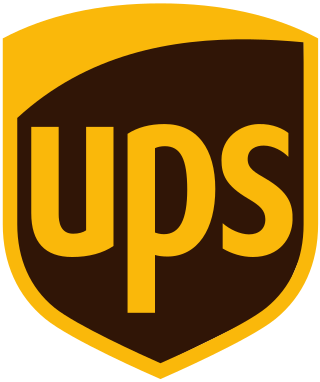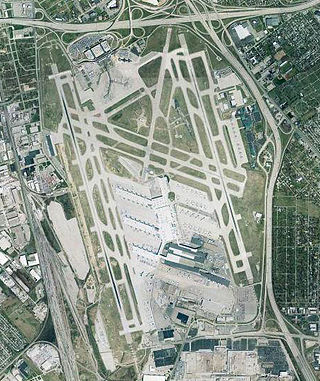
The Boeing 767 is an American wide-body airliner developed and manufactured by Boeing Commercial Airplanes. The aircraft was launched as the 7X7 program on July 14, 1978, the prototype first flew on September 26, 1981, and it was certified on July 30, 1982. The initial 767-200 variant entered service on September 8, 1982, with United Airlines, and the extended-range 767-200ER in 1984. It was stretched into the 767-300 in October 1986, followed by the extended-range 767-300ER in 1988, the most popular variant. The 767-300F, a production freighter version, debuted in October 1995. It was stretched again into the 767-400ER from September 2000.

Saudia, formerly known as Saudi Arabian Airlines, is the flag carrier of Saudi Arabia, based in Jeddah. The airline's main hub is at King Abdulaziz International Airport in Jeddah and King Khalid International Airport in Riyadh, with it planning to pull out of Riyadh as a major hub by 2030.
Polar Air Cargo Worldwide Inc. is a cargo airline based in Purchase, New York, United States. It operates scheduled all-cargo services to North America, Asia, Europe, and the Middle East. Its main base is Cincinnati/Northern Kentucky International Airport, with hubs at Los Angeles International Airport, Hong Kong International Airport, Narita International Airport and Incheon International Airport near Seoul, South Korea. Polar's parent company is Atlas Air Worldwide Holdings and DHL has a 49% equity interest in the airline.
Atlas Air, Inc. is a major American cargo airline, passenger charter airline, and aircraft lessor based in Purchase, New York. It is a wholly owned subsidiary of Atlas Air Worldwide Holdings. Atlas Air is the world's largest operator of the Boeing 747 aircraft, with a total fleet of 54 of this specific fleet type. In 2021, the airline had 4,056 employees and operated to more than 300 global destinations.

United Parcel Service, Inc. (UPS) is an American multinational shipping & receiving and supply chain management company founded in 1907. Originally known as the American Messenger Company specializing in telegraphs, UPS has expanded to become a Fortune 500 company and one of the world's largest shipping couriers. UPS today is primarily known for its ground shipping services as well as the UPS Store, a retail chain which assists UPS shipments and provides tools for small businesses. UPS offers air shipping on an overnight or two-day basis and delivers to post office boxes through UPS Mail Innovations and UPS SurePost, two services that pass on packages to the United States Postal Service for last-mile delivery.
All Nippon Airways Co., Ltd. is a Japanese airline headquartered in Minato, Tokyo. ANA operates services to both domestic and international destinations and is Japan's largest airline, ahead of its main rival flag carrier Japan Airlines. As of April 2023, the airline has approximately 12,800 employees. The airline joined as a Star Alliance member in October 1999.

Louisville Muhammad Ali International Airport, formerly known as simply Louisville International Airport, is a civil-military airport in Louisville in Jefferson County, Kentucky. The airport covers 1,500 acres (6.1 km2) and has three runways. Its IATA airport code, SDF, is based on the airport's former name, Standiford Field. Despite being called an international airport, it has no regularly-scheduled international passenger flights, but is a port of entry, handling many UPS Airlines international cargo flights through the United Parcel Service's worldwide air hub, often referred to as UPS Worldport.

Ansett Australia was a major Australian airline group, based in Melbourne, Victoria. The airline flew domestically within Australia and from the 1990s to destinations in Asia. After operating for 65 years, the airline was placed into administration in 2001 following a financial collapse and subsequent organised liquidation in 2002, subject to deed of company arrangement. The last flight touched down on 5 March 2002.
EVA Airways Corporation is a Taiwanese international airline headquartered in Taoyuan City. It is one of the two largest airlines in Taiwan along with state-owned China Airlines. The privately-owned airline operates passenger and dedicated cargo services to over 40 international destinations in Asia, Australia, Europe & North America. Its network fully consists of international routes, with no domestic routes. It is rated as a 5-star airline by Skytrax, and is the second largest airline based in Taiwan after China Airlines. EVA Air is headquartered at Taoyuan International Airport in Luzhu, Taoyuan City. The company slogan is "Sharing the World, Flying Together".

The Boeing 747-400 is a large, long-range wide-body airliner produced by Boeing Commercial Airplanes, an advanced variant of the initial Boeing 747. The "Advanced Series 300" was announced at the September 1984 Farnborough Airshow, targeting a 10% cost reduction with more efficient engines and 1,000 nautical miles [nmi] of additional range. Northwest Airlines became the first customer with an order for 10 aircraft on October 22, 1985. The first 747-400 was rolled out on January 26, 1988, and made its maiden flight on April 29, 1988. Type certification was received on January 9, 1989, and it entered service with NWA on February 9, 1989.
AHK Air Hong Kong Limited is an all-cargo airline based in Chek Lap Kok, Hong Kong, with its main hub at Hong Kong International Airport. The airline operates an express freight network to 13 destinations in nine countries, including China, Japan, Malaysia, Philippines, Taiwan, Singapore, South Korea, Thailand and Vietnam. It has a fleet of Airbus A300-600F General Freighters, which the airline was the launch customer of this new variant. Its head office is located on the fourth floor of the South Tower of Cathay Pacific City.
Pacific Western Airlines Ltd (PWA) was an airline that operated scheduled flights throughout western Canada and charter services around the world from the 1950s through the 1980s.
Emirates SkyCargo is a cargo airline based in Dubai, United Arab Emirates. As of 2020, it is the fourth largest cargo airline worldwide in terms of the total freight tonne-kilometres flown and international freight tonne-kilometres flown.

FedEx Express is a major American cargo airline based in Memphis, Tennessee, United States. As of 2023, it is the world's largest cargo airline in terms of fleet size and freight tons flown. It is the namesake and leading subsidiary of FedEx Corporation, delivering freight and packages to more than 375 destinations over 220 countries across six continents each day. FedEx Express is also the world's largest express transportation company.

Titan Airways Limited is a British charter airline based at London Stansted Airport., The carrier specialises in short-notice ACMI and wet lease operations, as well as ad-hoc passenger and cargo charter services to tour operators, corporations, governments, and the sports and entertainment sectors. The company holds a United Kingdom Civil Aviation Authority Type A Operating Licence, permitting it to carry passengers, cargo and mail, on aircraft with 20 or more seats.

The Boeing 747-8 is the final series of the large, long-range wide-body airliners in the Boeing 747 family from Boeing Commercial Airplanes. The 747-8 is the largest variant of the 747 and Boeing's largest aircraft. After introducing the 747-400, Boeing considered larger 747 versions as alternatives to the proposed double-deck Airbus A3XX, later developed as the Airbus A380. The stretched 747 Advanced was launched as the 747-8 on November 14, 2005, for a market forecast of 300 aircraft. The first 747-8F Freighter performed its maiden flight on February 8, 2010, and the passenger 747-8I Intercontinental followed suit on March 20, 2011. The cargo version was first delivered in October 2011 and the airliner began commercial service in June 2012.
Maersk Air Cargo, formerly branded as Star Air, is a Danish cargo airline and part of Danish business conglomerate Maersk. It operates a fleet of 14 Boeing 767 cargo aircraft. Several of these are on contract to United Parcel Service (UPS) and operate out of Cologne Bonn Airport, Germany & East Midlands Airport, UK. Star Air is headquartered in Dragør, Denmark, at the premises of Copenhagen Airport.
Qantas operates a fleet of Airbus A330, Airbus A380, Boeing 737 and Boeing 787 making a total of 125 aircraft. This list excludes subsidiaries Jetstar, QantasLink and Qantas Freight.
Amazon Air is a virtual cargo airline operating exclusively to transport Amazon packages. In 2017, it changed its name from Amazon Prime Air to Amazon Air to differentiate themselves from their Amazon Prime Air autonomous drone delivery service. However, the Prime Air logo remains on the aircraft. Until January 2021, the airline had relied on wet-leasing its aircraft from other operators, but going forward it is looking to directly own some aircraft. On the planes the airline owns, the airline will still rely on others for CMI leases.
The Challenge Group is an international air cargo group of eight synergistic divisions whose management, main hub, and business centre are in Europe. The Group employs 850 staff members across several countries, has a fleet of eight owned aircraft.























